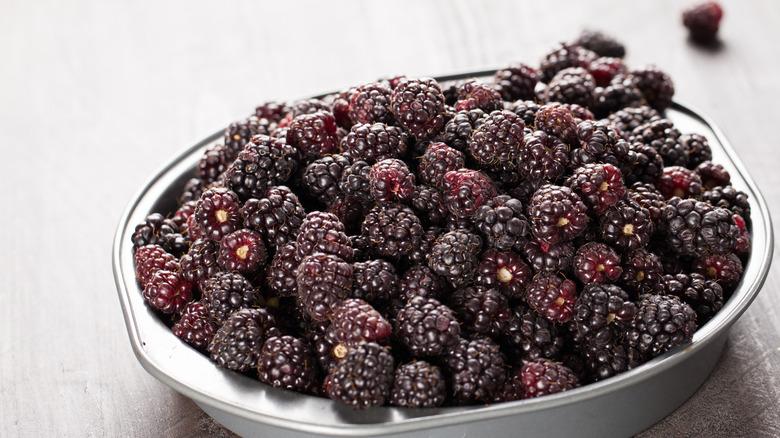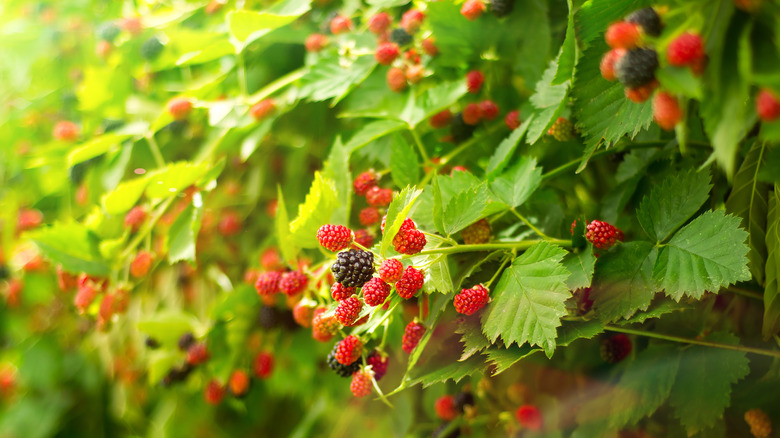Boysenberry Is Actually A Hybrid Of 3 Different Berries
Boysenberries are big bramble fruits, red-black in color, tasting sharp and sugary. Commonly found in pastries, especially cakes, cobblers, and pies, the fruit is used for much more than just raw consumption. Still, boysenberries can be sprinkled fresh onto cold, dairy items or fruit salads. On the other hand, they're often preserved, particularly in cans; they can also be included in jams and syrups. This is partially due to their perishability, which makes them a bit overlooked in markets. While the boysenberry was created in California by cross-breeding three different types of berries, the crop is now grown across the United States' west coast and, to a large extent, in New Zealand (via Britannica).
Boysenberry season peaks during the summer, per All Recipes. Around this time, you can find them at farmers' markets or in your garden if you have a green thumb. While they spoil and damage easily, you might also find them stocked on the shelves of your local chain store's produce section. Delighted Cooking recommends looking for firm, uniform ones. Despite the hassle, many consider their tart juiciness more than worth it. After all, they're nutrient-rich (via Specialty Produce). If you buy some but can't eat them right away, you should refrigerate them for up to three days, per Better Homes & Gardens. A freezer is also an option for long-term storage.
It's clear to see that boysenberries are pretty unique. How did they get this way?
Blackberries, loganberries, and raspberries
In the early '30s, according to Knott's Berry Farm, Rudolph Boysen began to develop a new berry variety. As a horticulturist (via Boysenberry New Zealand), he did this by cross-breeding blackberries, loganberries, and raspberries. However, the resulting combination continuously perished out in the field. Boysen (the person, not the berry) was not to be deterred. He gave the struggling crop over to Walter and Cordelia Knott at their namesake farm. Fortunately, Walter was able to successfully cultivate the plant and gratefully dubbed its fruit "boysenberry," in honor of Rudolph.
Knott's Berry Farm had already been growing asparagus and rhubarb, as well as other berries. Plus, it had been making its own jams and jellies. Now, the Knott family added boysenberries to the bunch, and Cordelia baked boysenberry pies. To this day, Knott's Berry Farm still grows a million pounds of the fruit annually, and it's also the top consumer of the crop. In fact, Knott's Berry Farm holds the Boysenberry Food and Wine Festival at their theme park each year. Blackberries, loganberries, and raspberries sure are good, but boysenberries combine all that goodness into one. That's something worth celebrating!

